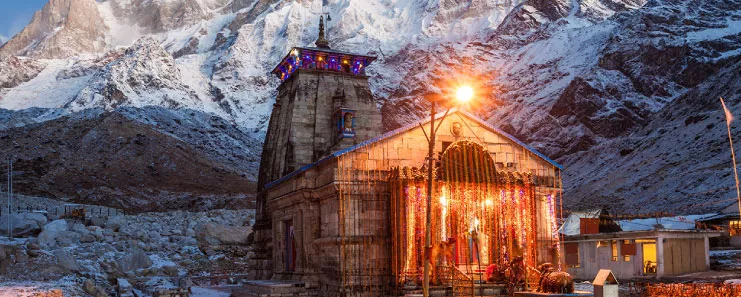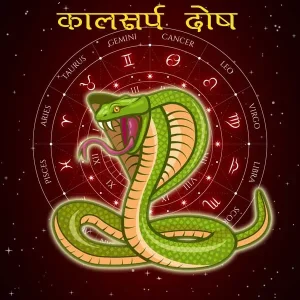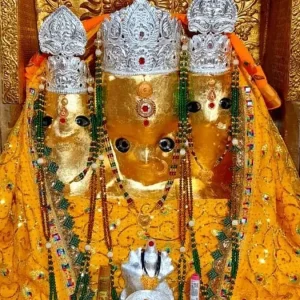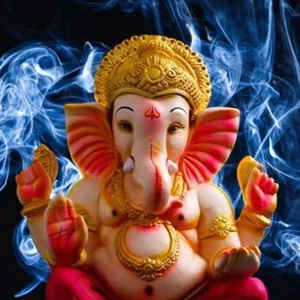Kedarnath Jyotirlinga are sacred shrines of Lord Shiva; it is believed that Lord Shiva himself visited these places and hence they have a special place in the hearts of devotees. There are 12 of them in India.
Jyotirlinga means ‘column or pillar of light’. The ‘stambha’ symbol represents that there is no beginning or end.
When Lord Brahma and Lord Vishnu had an argument about who was the supreme god, Lord Shiva appeared as a column of light and asked each one to find the ends. Neither could do it. It is believed that the places where these columns of light fell is where the Kedarnath Jyotirlinga are located.
Kedarnath means ‘Lord of the field or Kedar Khand’ region, the historical name of the region. Set amid scenic snowy mountains and valleys covered with grassy meadows, the Kedarnath temple is on the must-see list of sightseers all over the world – not just pilgrims.
Kedarnath is one of the four major pilgrimage sites – the Chota Char Dam, along with Gangotri, Yamunotri and Badrinath – that devotees have on their bucket list of places to visit.
Where is the Kedarnath Jyotirlinga located?
Situated at an altitude of over 3,500 m above sea level in Uttarakhand, this temple is the highest of the 12 jyotirlingas in India. It is located at the head of the Mandakini and mythical Saraswati River in Garhwal Himalayas.
History of Kedarnath Jyotirlinga
One of the first references of Kedarnath is in the Skanda Purana that was written around the 7th and 8th century AD. The present structure is believed to have been constructed by Adi Shankaracharya about 1,200 years ago. It stands next to the site of a temple that is said to have been built by the Pandavas.
It has been renovated many times over the centuries.
Special features of Kedarnath Temple
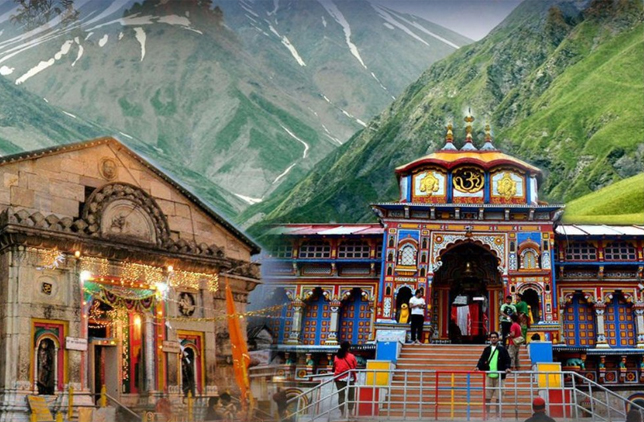
The Kedarnath Jyotirlinga is in the shape of a conical rock formation inside the temple – Lord Shiva in his Sadashiva form.
What is the story behind Kedarnath Jyotirlinga?

It is said that Lord Shiva was not willing to forgive the Pandavas for their deceit and sins during the war and hence hid himself from them. He disguised himself as a bull and disappeared into the ground.
The second Pandava, Bhimasena, tried to pull him out of the ground by tugging at his tail and hind legs. However, Lord Shiva dug himself deeper and only reappeared in parts in different places – the hump in Kedarnath, the arms in Tunganath, the navel and stomach in Madhyamaheshwar, the face in Rudranath, and the hair and head in Kalpeshwar.
The Pandavas built temples at these five places – the Panch Kedars – for worshipping Shiva. This freed them from their sins.
Lord Shiva further promised to stay on in the sacred spot as a triangular jyotirlinga. This is why Kedarnath is so famous and revered by devotees.
Interesting facts about Kedarnath Jyotirlinga
- Since Kedarnath is located at such an altitude, winters are severe, making the temple inaccessible. So, it is open to the public only between April and November. It closes on the first day of Kartik (October-November) and opens in Vaisakh (April-May) every year. During the winters, the murtis (idols) from Kedarnath temple are brought to Ukhimath and worshiped there for six months.
- In the 2013 floods, while adjacent areas were severely damaged, the Kedarnath temple itself was not affected.
- Kedarnath is the first of the Panch Kedars.
Considered one of the holiest temples for Lord Shiva, pilgrims devotedly visit this mountainous temple every year. While the main Kedarnath temple is normally closed during Mahashivratri celebrations, the Badri-Kedar festival is celebrated over a week in June every year.
Fulfill your spiritual yearning for Kedarnath Jyotirlinga with our online puja booking service. We offer a variety of puja packages performed by qualified priests, ensuring a sacred and authentic experience even if you cannot visit the shrine in person. Explore our puja options and embark on a divine journey from anywhere.

